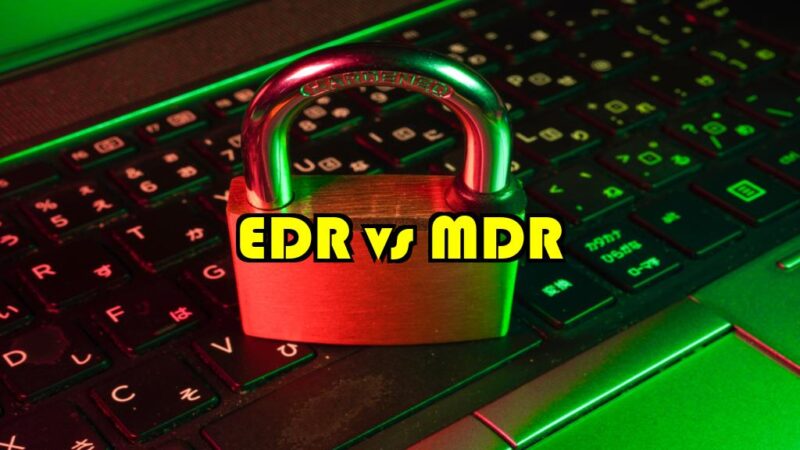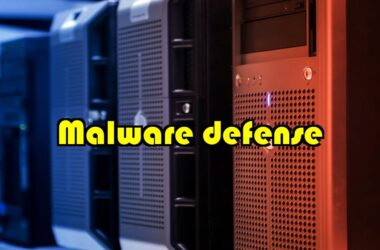In cybersecurity, terms like EDR and MDR are becoming increasingly important. Whether you’re a business owner, IT professional, or someone curious about safeguarding digital assets, understanding EDR vs MDR is crucial. In this article, we’ll explore the key differences between EDR and MDR, shedding light on their unique roles in protecting against cyber threats.
EDR vs MDR
Understanding EDR
What is EDR?

Endpoint Detection and Response (EDR) is a cybersecurity solution designed to monitor and respond to potential threats at the endpoint level. Endpoints, such as computers, servers, and mobile devices, are often the primary targets for cyber attacks. EDR solutions focus on detecting suspicious activities, investigating incidents, and providing a rapid response to mitigate potential risks.
EDR Features
Real-time Monitoring: EDR tools continuously monitor endpoint activities in real-time, identifying abnormal behavior or potential security incidents.
Incident Investigation: In the event of a security incident, EDR facilitates thorough investigations, helping security teams understand the nature and scope of the threat.
Isolation and Remediation: EDR allows for the isolation of compromised endpoints and assists in the remediation process to minimize the impact of security breaches.
MDR in Action
What is MDR?
Managed Detection and Response (MDR) takes a more holistic approach to cybersecurity by providing continuous monitoring, detection, and response services. Unlike EDR, MDR extends its reach beyond endpoints to include networks and cloud environments. MDR services are often outsourced to specialized providers, allowing organizations to benefit from the expertise of dedicated security professionals.
MDR Features
Proactive Threat Hunting: MDR services actively hunt for potential threats across the entire IT infrastructure, identifying vulnerabilities before they can be exploited.
24/7 Monitoring: MDR providers offer round-the-clock monitoring, ensuring that security incidents are detected and addressed promptly, even outside regular working hours.
Incident Response Planning: MDR services not only respond to incidents but also help organizations develop and refine their incident response plans for better preparedness.
ALSO READ: Malware Defense: Fool-Proof Strategy 2023
Head-to-Head Comparison

Now that we have a basic understanding of EDR and MDR, let’s delve into a detailed comparison:
1. Scope of Protection
- EDR: Primarily focuses on endpoints such as devices and servers.
- MDR: Offers a broader scope by encompassing endpoints, networks, and cloud environments.
2. Deployment
- EDR: Usually deployed on individual endpoints within an organization’s network.
- MDR: Deployed as a managed service, often outsourced to specialized cybersecurity providers.
3. Monitoring Approach
- EDR: Monitors and responds to activities at the endpoint level.
- MDR: Provides comprehensive monitoring across the entire IT infrastructure.
4. Threat Intelligence
- EDR: Relies on endpoint-specific threat intelligence.
- MDR: Incorporates threat intelligence from various sources, offering a more comprehensive view of potential risks.
FAQs
Is MDR the same as SIEM?
No, they’re different. MDR focuses on finding and responding to threats, while SIEM manages and analyzes log data for a broader view of IT security.
Is MDR and XDR the same?
No, they’re not. MDR handles threat detection and response, while XDR (Extended Detection and Response) expands to cover more than one type of environment, like endpoints, networks, and email.
Is XDR better than MDR?
It depends on your needs. XDR offers a broader scope, but MDR might be sufficient for some. Consider your specific cybersecurity requirements before deciding.
Conclusion
In conclusion, understanding the EDR vs MDR is essential for making informed decisions regarding cybersecurity strategies. EDR excels at endpoint-level protection, while MDR takes a broader approach by encompassing endpoints, networks, and cloud environments. Organizations can benefit from a combination of both solutions, creating a robust defense against the ever-evolving landscape of cyber threats. As you navigate the realm of cybersecurity, keep in mind that a proactive and comprehensive approach is key to safeguarding your digital assets.
ALSO READ: 5 Best Predictive Maintenance Software









